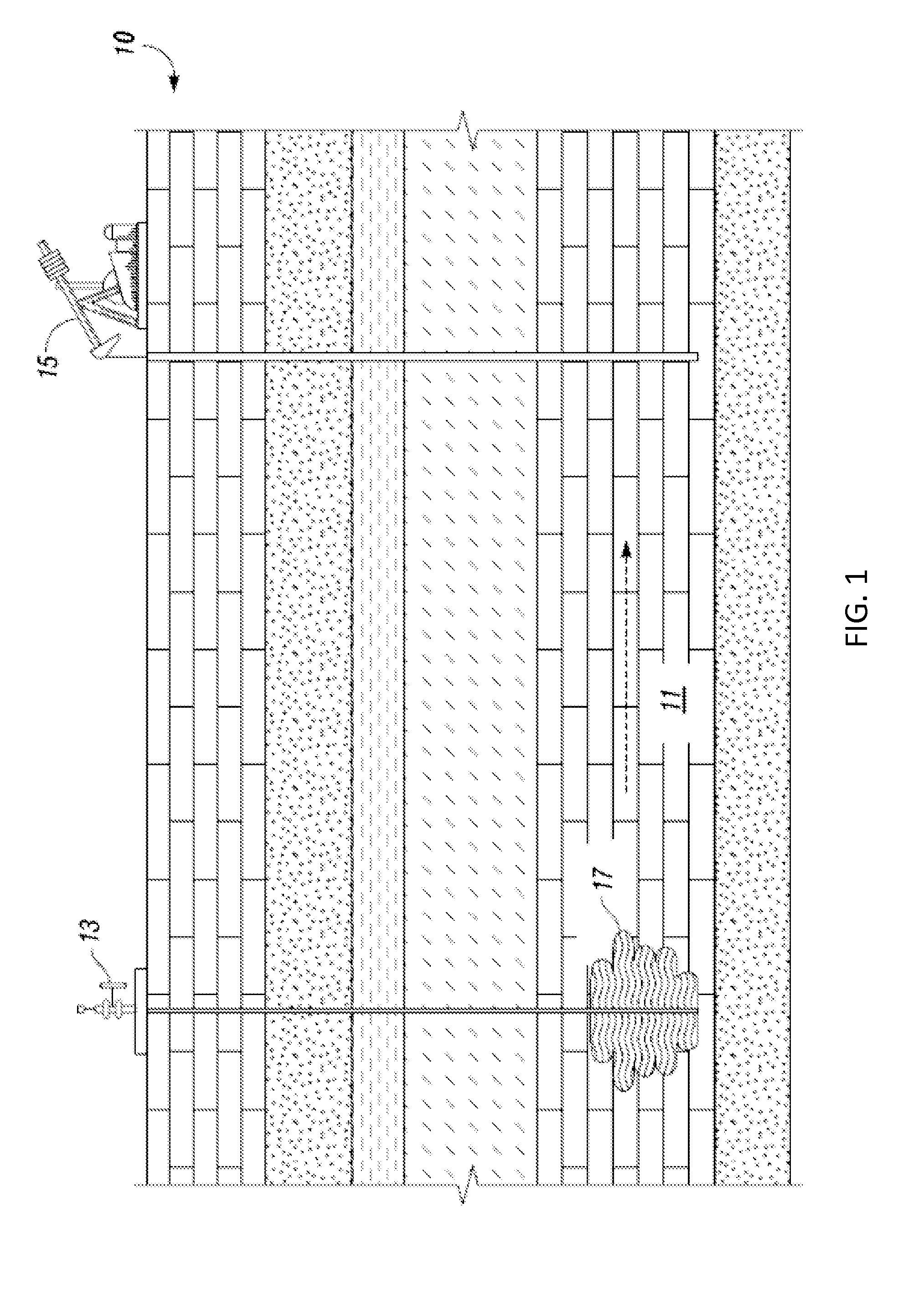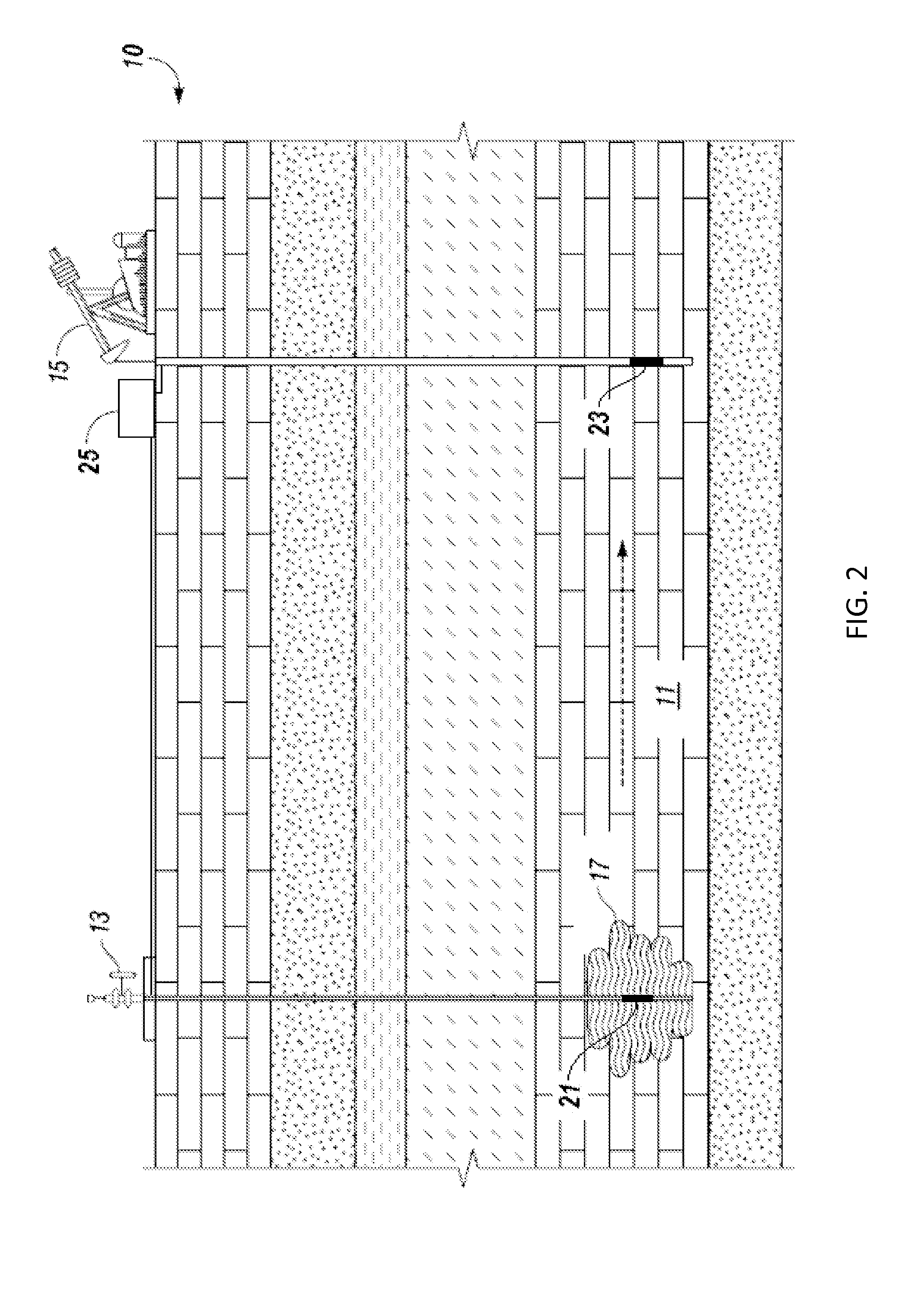Electrokinetic enhanced hydrocarbon recovery from oil shale
a technology of enhanced hydrocarbon recovery and oil shale, which is applied in the direction of fluid removal, earth-moving drilling, borehole/well accessories, etc., can solve the problems of unreliable recovery results, unsatisfactory economic benefits, and long time-consuming shell approach, so as to achieve more environmental protection, more economical, and more efficient in producing commercial products
- Summary
- Abstract
- Description
- Claims
- Application Information
AI Technical Summary
Benefits of technology
Problems solved by technology
Method used
Image
Examples
example 1
[0180]The advantages of electrokinetic-induced migration over traditional hydraulic delivery is illustrated in the following experiment. A thin glass tank having a width of about 4 cm was constructed to simulate a two-dimensional flow field through a heterogeneous porous media. House-brick sized pieces of clay, which represent low permeability features, were emplaced within a zone of contiguous glass beads. The glass beads represent the high permeability zones of channeled flow. The tank was saturated with water and a flow field was established across the apparatus by fixing the hydraulic head (water elevation) at different heights on either side of the tank. Potassium permanganate was introduced into one side of the tank and allowed to flow through the apparatus. The potassium permanganate was substantially distributed within the glass beads after two hours. However, essentially no infiltration into the clay bricks occurred, indicating that the potassium permanganate bypassed the l...
example 2
[0181]This example illustrates the effectiveness of potassium permanganate for producing high molecular weight organic acids in reactions with kerogen.
[0182]Kerogen was separated from a sample of oil shale that contained kerogen. The separated kerogen was largely organic matter, with a small amount of inorganic matter remaining from the inorganic substrate in which the kerogen originated. For this example, 2.50 grams of kerogen (organic matter basis) was combined with a solution containing 0.5 g KMnO4 in 100 ml of 1% KOH solution. The kerogen / KMnO4 mixture was stirred at 75° C. until the solution had lost its color, with no visual evidence of the purple permanganate color remaining In general, this reaction took several hours, and up to 12 hours in some cases. The kerogen was then allowed to settle, and was separated from the solution. The kerogen was then rinsed with two 75 ml aliquots of 1% KOH solution. The two rinse solutions were set aside. The rinsed kerogen was then contacted...
PUM
 Login to View More
Login to View More Abstract
Description
Claims
Application Information
 Login to View More
Login to View More - R&D
- Intellectual Property
- Life Sciences
- Materials
- Tech Scout
- Unparalleled Data Quality
- Higher Quality Content
- 60% Fewer Hallucinations
Browse by: Latest US Patents, China's latest patents, Technical Efficacy Thesaurus, Application Domain, Technology Topic, Popular Technical Reports.
© 2025 PatSnap. All rights reserved.Legal|Privacy policy|Modern Slavery Act Transparency Statement|Sitemap|About US| Contact US: help@patsnap.com



